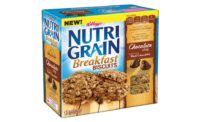Spreading omega awareness

These days, a strong percentage of people have heard about the benefits of polyunsaturated omega-3 fatty acids found in sources like cold-water fish, among others. Even awareness of omega-6s—another polyunsaturated fatty acid found in sources like flax and hemp oils, and nuts—has begun to spread. But what about omega-9s?
Omega-9 is high in monounsaturated fats and low in saturated fats. Omega-9 oils, like high oleic canola and soybean oils, are important parts of a healthy diet.
In order to draw attention to this lesser-known omega, and highlight the health benefits of omega-9 oil in our diet, Corteva Agriscience, the Agriculture Division of DowDuPont, is celebrating “3-6-9 Day” on March 6, 2019.
In order to learn more, we reached out to Carson Callum, market manager, grains and oils, Corteva Agriscience.
Douglas J. Peckenpaugh: What are the differences between omega-3, omega-6 and omega-9 fatty acids?
Carson Callum: Omega-3, omega-6 and omega-9 are all important dietary fatty acids that provide different health benefits when integrated into our diets. Many people recognize omega-3s for their impact on cognitive and heart health, and omega-6s for their role in cell structure and tissue health. While lesser known, omega-9 is an oleic acid that offers numerous benefits, particularly to bolster cardiovascular and metabolic health. All three fatty acids are found in different types of food: omega-3 is commonly found in fish, chia seeds and flaxseed, and omega-6 can be found in refined vegetable oils, like corn oil, and various types of nuts. Omega-9 is commonly found in vegetable and seed oils like canola and soybean, as well as numerous nuts and seeds.
DJP: What are the specific benefits of Omega-9 Oils?
CC: High-stability oils, like Omega-9 Canola Oil and Plenish high-oleic soybean oil, are low in saturated fat and are among the highest in heart-healthy fats of all commercially available oils. High in monounsaturated fats, Omega-9 Oil is a proven, healthy oil solution because of its unique fatty-acid profile, which may help lower the risk of heart disease by improving cardiovascular risk factors and blood vessel function. Omega-9 Oils can also help diabetics regulate their blood sugar more efficiently and improve mood and metabolism.
DJP: Why is it important to help people reduce their intake of saturated fats?
CC: According to the American Heart Association, saturated fats should be limited due to the risk of raising “bad” cholesterol putting you at a higher risk for heart disease. Reducing saturated fats in the North American diet and replacing them with “good” fats, such as the monounsaturated fats in Omega-9 Oils, can have positive effects on vascular and circulatory health. Limiting saturated fats helps reduce cholesterol, and when monounsaturated fats are substituted, “bad” cholesterol levels can decrease.
DJP: What are some of the top uses of Omega-9 Oils for retail snack and bakery applications?
CC: Omega-9 Oils have superior versatility over other commodity oils and help maintain freshness and shelf life without additives or preservatives, enabling a clean label that consumers demand. Snacks and baked goods can benefit from a cleaner taste that allows the savory and bold flavors to shine through as a result of Omega-9 Oils.
DJP: How are Omega-9 Oils typically used in foodservice operations to develop items like appetizers, snacks, sides and baked goods?
CC: High-stability oils, such as Omega-9 Oils, offer numerous benefits to foodservice and food development operations, such as higher heat stability for frying, increased fry life, improved taste while maintaining a clean flavor, and blending opportunities to maximize functionality, flavor and cost benefit.
For more information on omega fatty acids, visit the Good Fats 101 website.
Looking for a reprint of this article?
From high-res PDFs to custom plaques, order your copy today!









